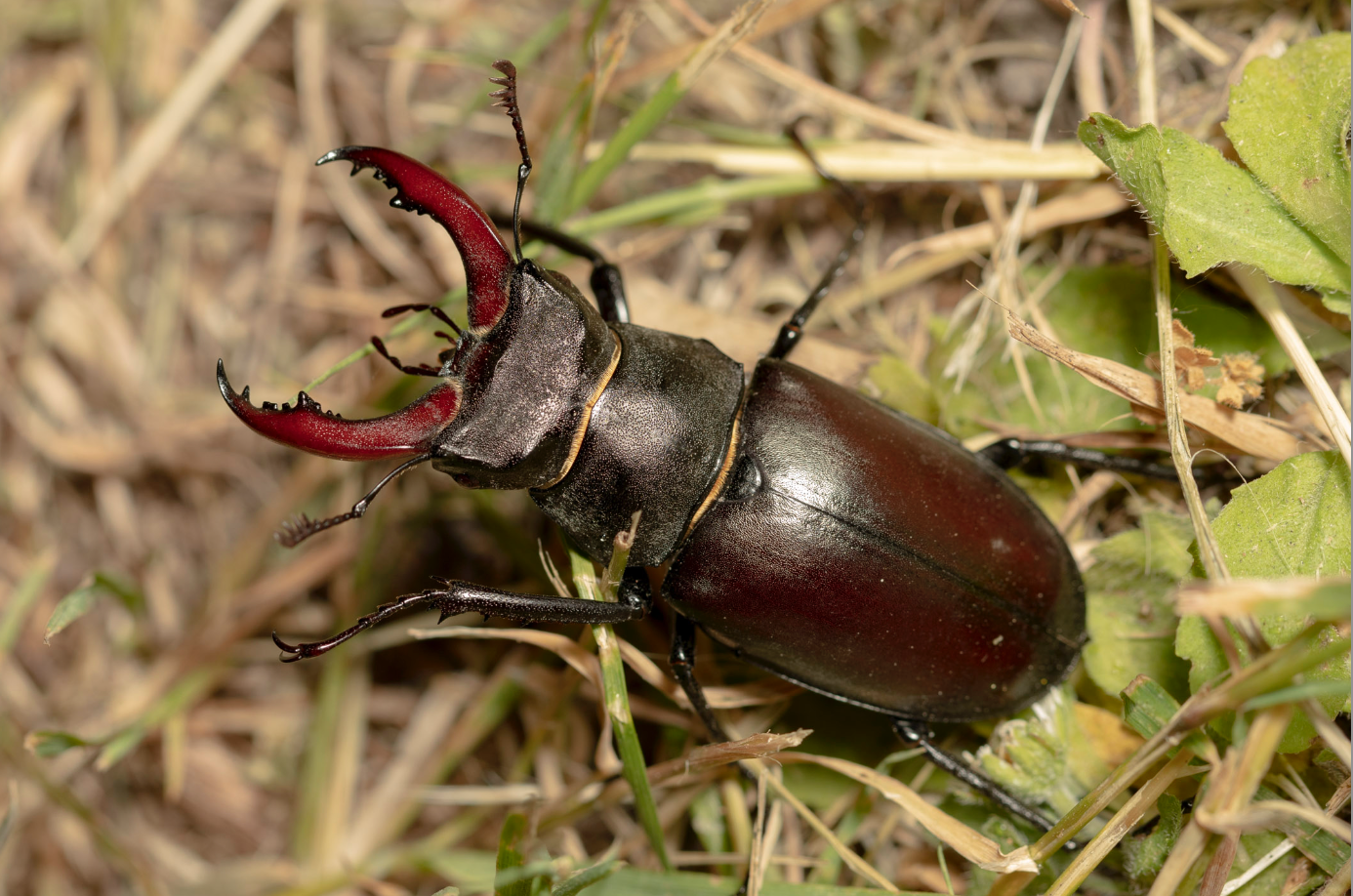
If you are lucky enough to see a Stag Beetle (Lucanus cervus), would it surprise you to learn that the began its life at least five years ago, beneath your feet? Female Stags lay their eggs in loose, loamy soil, ideally by a rotting broadleaf tree stump. Upon hatching, the larvae burrow into the soft decaying tree, whereupon they embark upon an ‘all-you-can-eat-buffet’. They will spend the next five to seven years eating, growing and moulting, becoming colossal in size. The considerable fat reserves they build up during this binge are important, because they will expend a huge amount of energy during pupation, transforming from this soft, squidgy larva into the large, armoured beetle that we know and love. Over just a few weeks,, the simple-looking larva will completely transform. The newly minted, hard-shelled adult then emerges in late spring, ready to find a mate.
Our increasing obsession with keeping things tidy and ordered is a direct threat to Stag Beetle populations. The dead wood and rotting stumps that they require are too often removed to make way for paving and pristine lawns. Mature trees and orchards are cleared for redevelopment in urban areas, reducing the available habitat. Large numbers are killed by vehicles when they land on roads, attracted by the warm surface. Such is the threat to Stag Beetle numbers, that they are now legally protected and classed as a ‘priority species’, listed on Schedule 5 of the Wildlife and Countryside Act 1981.
Stag Beetles are unmistakeable; the males have those distinctive, long, red mandibles which resemble antlers. The females don't have them, but they do have the smooth, chestnut-brown wing cases that distinguish then from their smaller relative, the Lesser Stag Beetle. Body length 2.5-4.5cm (up to 8cm inc. mandibles in males).